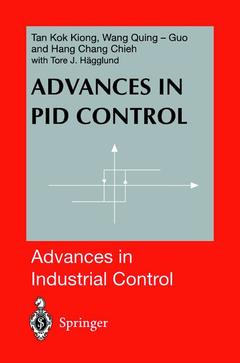Advances in PID Control, Softcover reprint of the original 1st ed. 1999 Advances in Industrial Control Series
Auteurs : Tan Kok K., Wang Qing-Guo, Hang Chang C.

Evolution and components of PID controllers
Classical and Modern PID controller design
Automatic Tuning
Multi-loop Control
Practical issues concerned with PID control
The book is intended to be useful to a wide spectrum of readers interested in PID control ranging from practising technicians and engineers to graduate and undergraduate students.
PID control has a long history and widespread use in engineering
The subject is covered comprehensively and in depth from its classical to its modern aspects
Date de parution : 09-2011
Ouvrage de 264 p.
15.5x23.5 cm
Disponible chez l'éditeur (délai d'approvisionnement : 15 jours).
Prix indicatif 105,49 €
Ajouter au panierThème d’Advances in PID Control :
Mots-clés :
FFT; adaptive control; control theory; design; pid control; pid controller; pole placement; simulation; stability; transfer function
